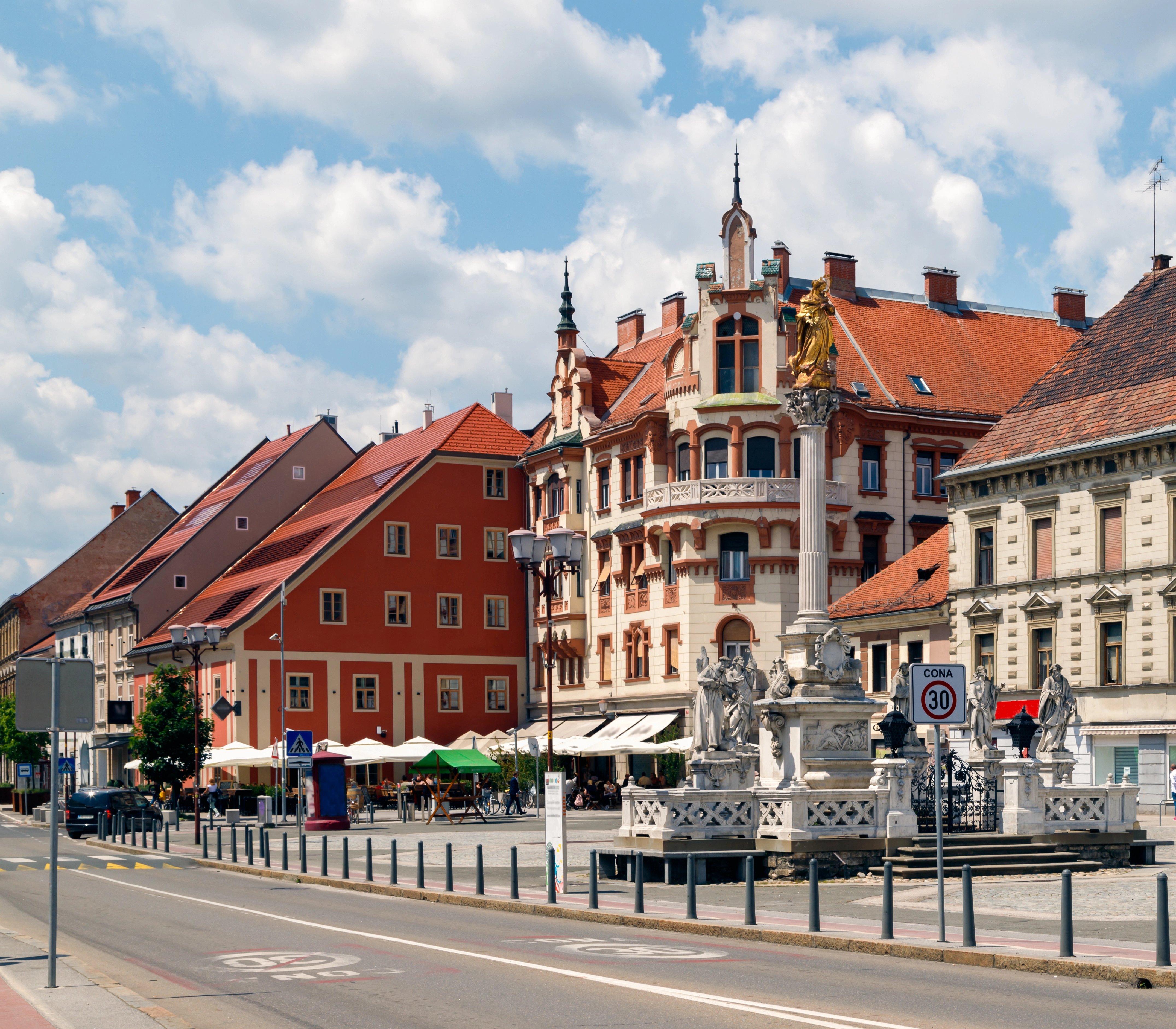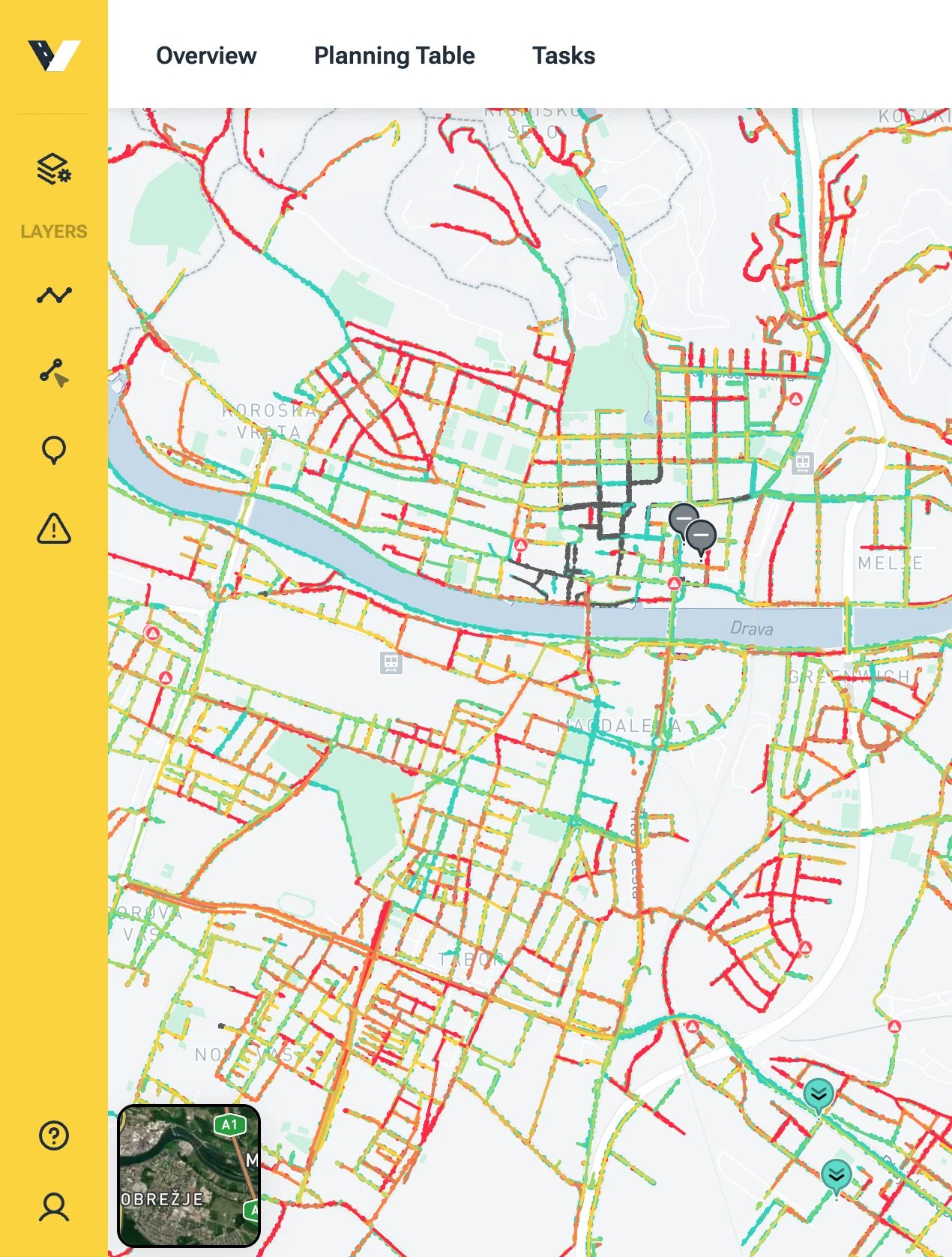
Maribor, Slovenia
Better infrastructure through digitalization
Since February 2022, the city of Maribor is using the vialytics system. It is the first city in Slovenia to work with vialytics. A big challenge, after all Maribor is the second largest city in the country. With a road network totaling over 470 miles, there is a lot of work to do for the local authorities.
Today Maribor can rely on digital support in form of vialytics' AI-based web system. Borut Hojnik is the head of the technical and administrative department of Maribors public service "Nigrad". That makes him responsible for managing the cities infrastructure. He explains how their approach to maintaining the roads has changed since vialytics was implemented.
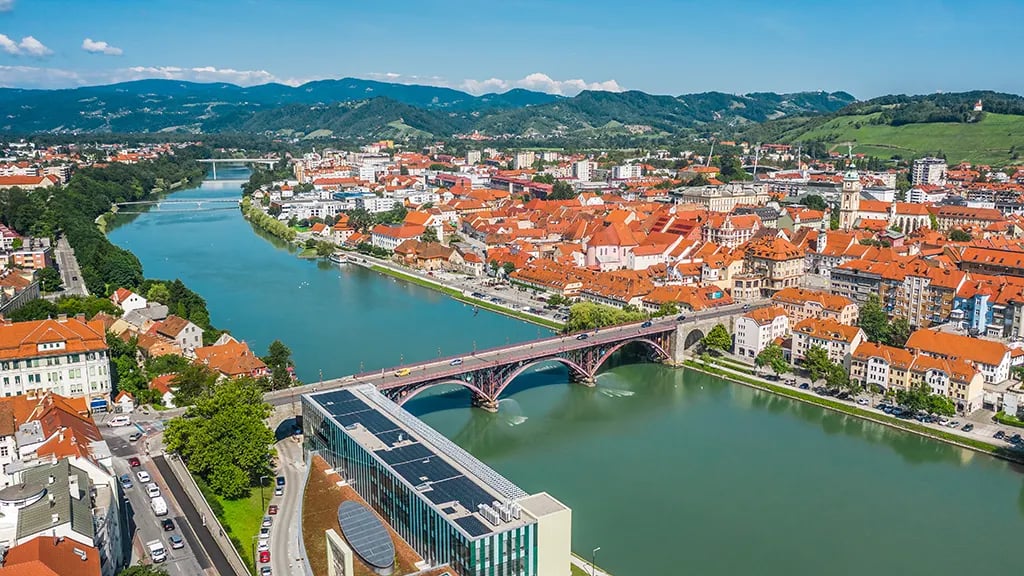
About Maribor
Maribor lies in northeastern Slovenia. It's the countries second largest city with over 110,000 inhabitants (as of 2019), as well as the largest city in the Slovenian region of Lower Styria. Maribor was named European Capital of Culture in 2012. Among other things, the oldest grapevine in the world can be found here. With an estimated age of over 400 years it even has it's very own entry in the Guinness Book of Records.
Erfolgsgeschichte herunterladen
Erfolgsgeschichte herunterladen
Erfolgsgeschichte herunterladen
Write headlines that suck people in, like quicksand.
The rich text module offers editing options for multiple types of content, such as text formatting, images, links, CTAs, and more.
Mr. Hojnik, how was the condition of your roads recorded in the past?
Borut Hojnik: "In the past, Nigrad's own inspection service used to manually record the condition of the roads, as well as the damages. We also had an external contractor inspecting all municipal roads up to a specific cut-off date and giving an assessment for each 50-yard section.
Unlike the vialytics system, the damages were only ever recorded individually and they were subjectively classified by the respective employee. As a result, we did not have consistent and sustainably categorized data. In addition, it was not possible to objectively determine the different types of damage. We therefore didn't really have a good overview of the current condition of our roads and could only plan our infrastructure on a short term basis."
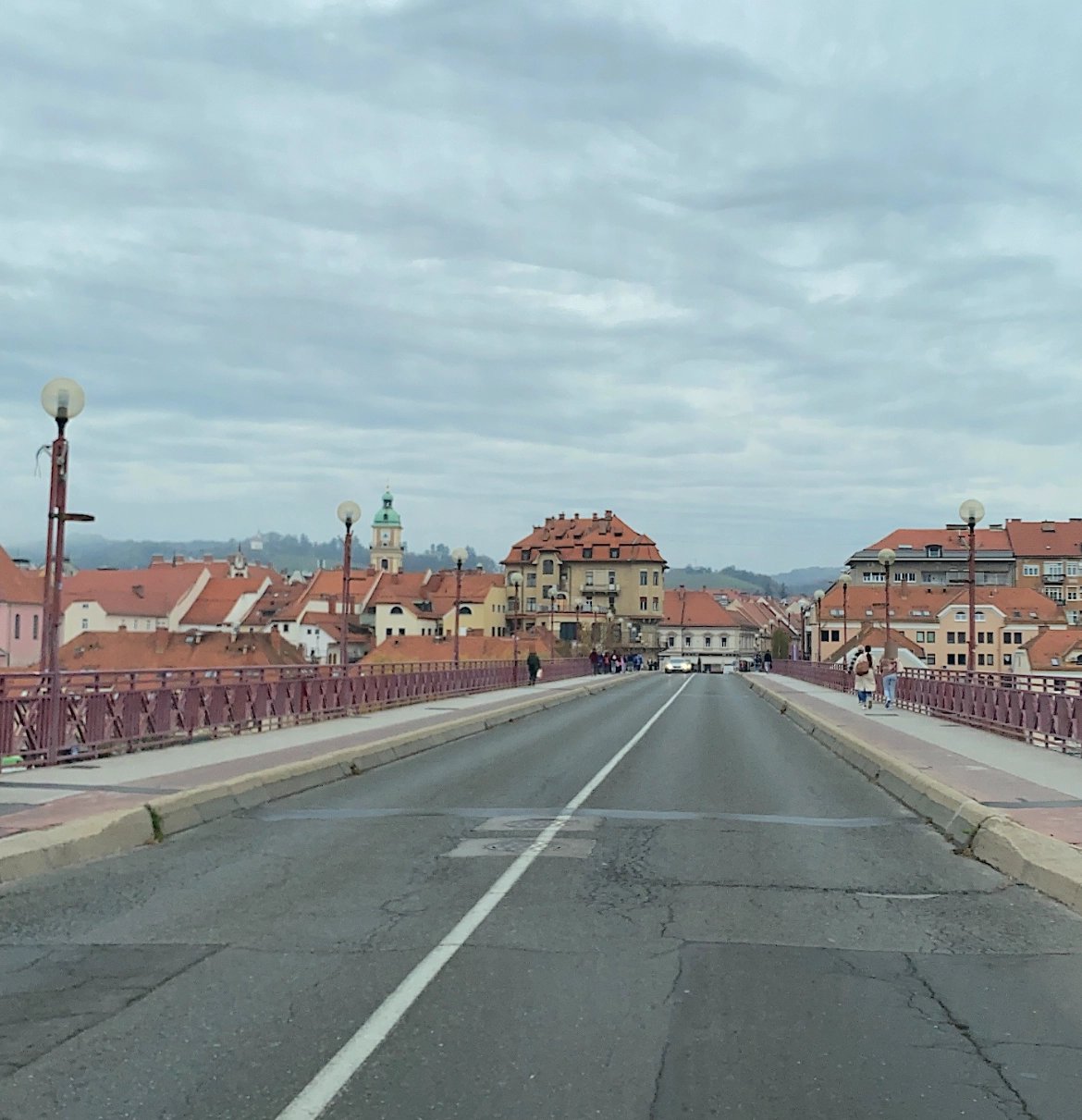
What has changed since you started using the vialytics system?
Borut Hojnik: "Due to the algorithm, the existing damages are recognized and classified directly while driving around the city with the vialytics system. If we want to analyze the data afterwards, all we need to do is look at the web system. There we can easily monitor all road sections, paired with the individual damages and we don't have to be on site every time.
In addition, the system is very flexible and can easily be integrated into our everyday work. Road assessments can be carried out by one single employee, while other tasks are not affected. This way we save labor capacity and we're way more independent of time and location. We can also use vialytics to plan targeted rehabilitations, such as filling potholes, and we can monitor and document the execution.
Another important aspect for us is the visual representation of the road network together with the objective data. That gives us a better basis to justify our rehabilitation plans to the owners of the roads, making it easier for us to get the necessary funding for maintaining the infrastructure."
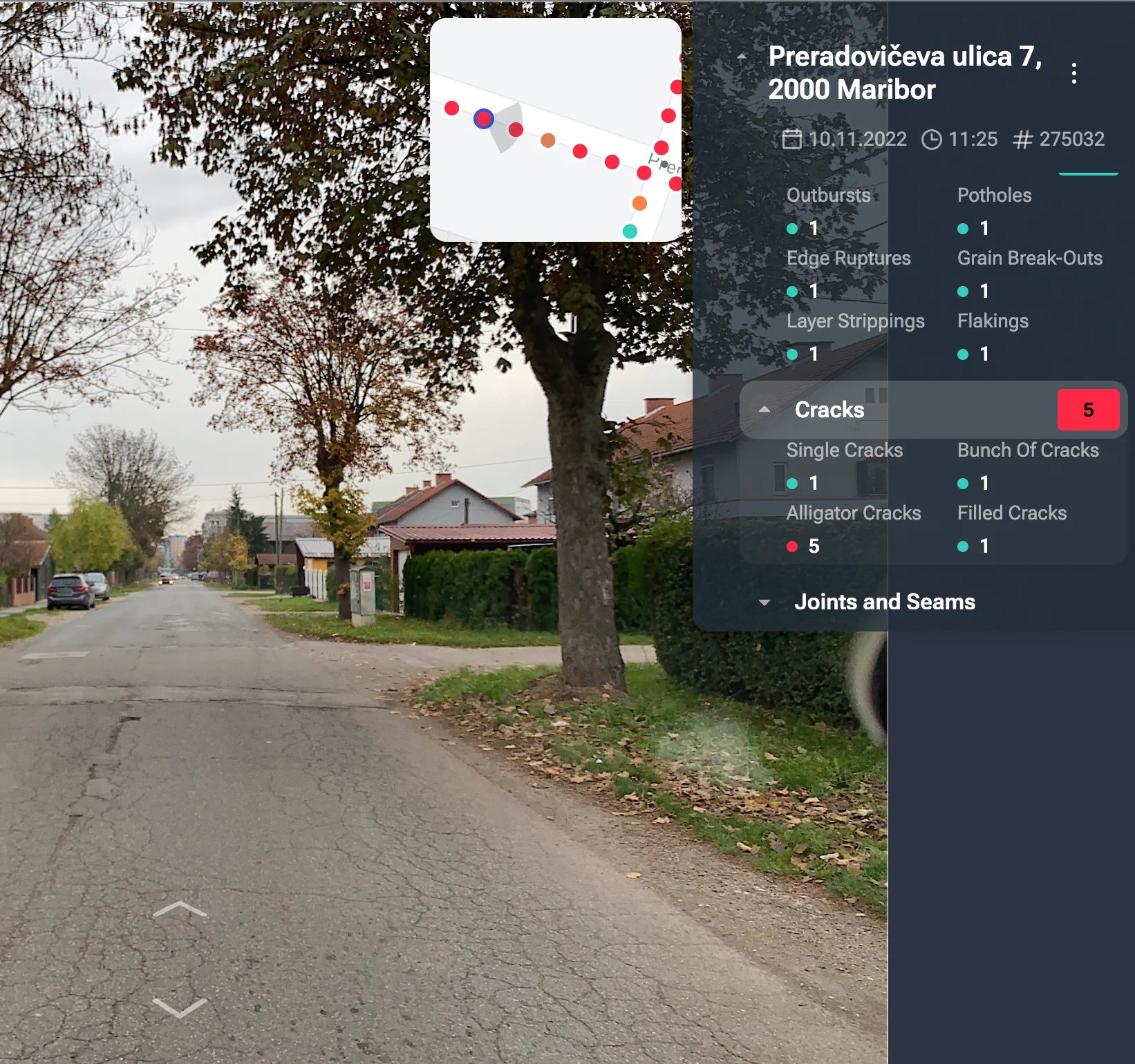
Which applications of the system do you use the most?
Borut Hojnik: "We mostly use the system for recording the condition of the roads on site. Combined with this, the web system helps to get a good overview of the condition of individual road sections. Being able to monitor Maribor's entire road network in one system, keeping track not only of the general condition but also of all individual damages at all times, is a great advantage for us. In summary, vialytics makes us much more flexible in our daily work and gives us a comprehensible structure according to which we can plan rehabilitations and never lose sight of the big picture."
